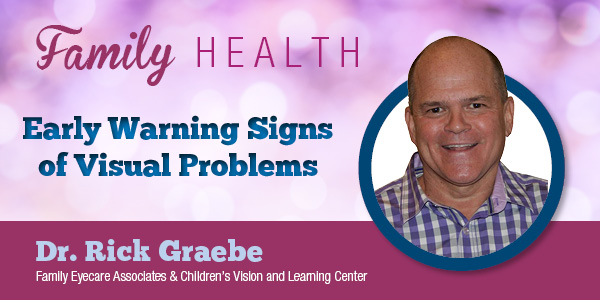Early Warning Signs of Visual Problems
Struggling with reading is a common indicator that your child may need an eye exam.
But what if the results of that eye exam are normal? Could the issue still be vision-related?
Absolutely. Standard eye exams don’t test the visual system in total, something that Dr. Rick Graebe, a behavioral optometrist, does routinely at his practice in Versailles.
Dr. Graebe specializes in Vision Therapy, which is a kind of physical therapy that helps overcome visual problems by connecting the eyes, the body and the brain.
“We create an environment in our office where the brain gets more meaningful experiences and creates new pathways,” Dr. Graebe said.
“Nerves that fire together, wire together.”
Warning signs of vision issues usually become noticeable by elementary school when reading becomes an integral part of a child’s day.
Up until that point children play by touching and feeling toys.
In elementary school, a child is expected to have prolonged fixation on an object like a chalkboard, or words in a book or on a computer.
They also are learning that orientation matters: a lowercase b and d are not interchangeable.
Avoidance of reading, or only wanting to be read to, is a red flag that there might be a visual problem at play.
Sports is another arena where a child may avoid participating if he has underlying visual issues.
Tossing a ball requires eye-hand coordination, awareness of space and awareness of timing – all things that may be difficult for someone with vision problems.
If a child avoids trying new things, has trouble focusing, is fidgety or has bad posture, those are all signs that there may be a breakdown in visual mechanics.
Eye mechanics are more complex than just having a structurally sound eye. Dr. Graebe compares it to playing a piano. Just because your fingers are strong enough to push the keys doesn’t mean they know where to go to make the right notes.
Your eyes may be strong and healthy, but if they are unable to point and work together as a team as they track across a page or process what they see and send it to the brain, you still have vision issues.
Dr. Graebe has used Vision Therapy since 1990, treating an average of 300 kids per year. That equals thousands of improved lives.
“It’s so cool now, hearing so many positive things coming back to me,” he said. “We’ve really made a change in people’s lives.”

